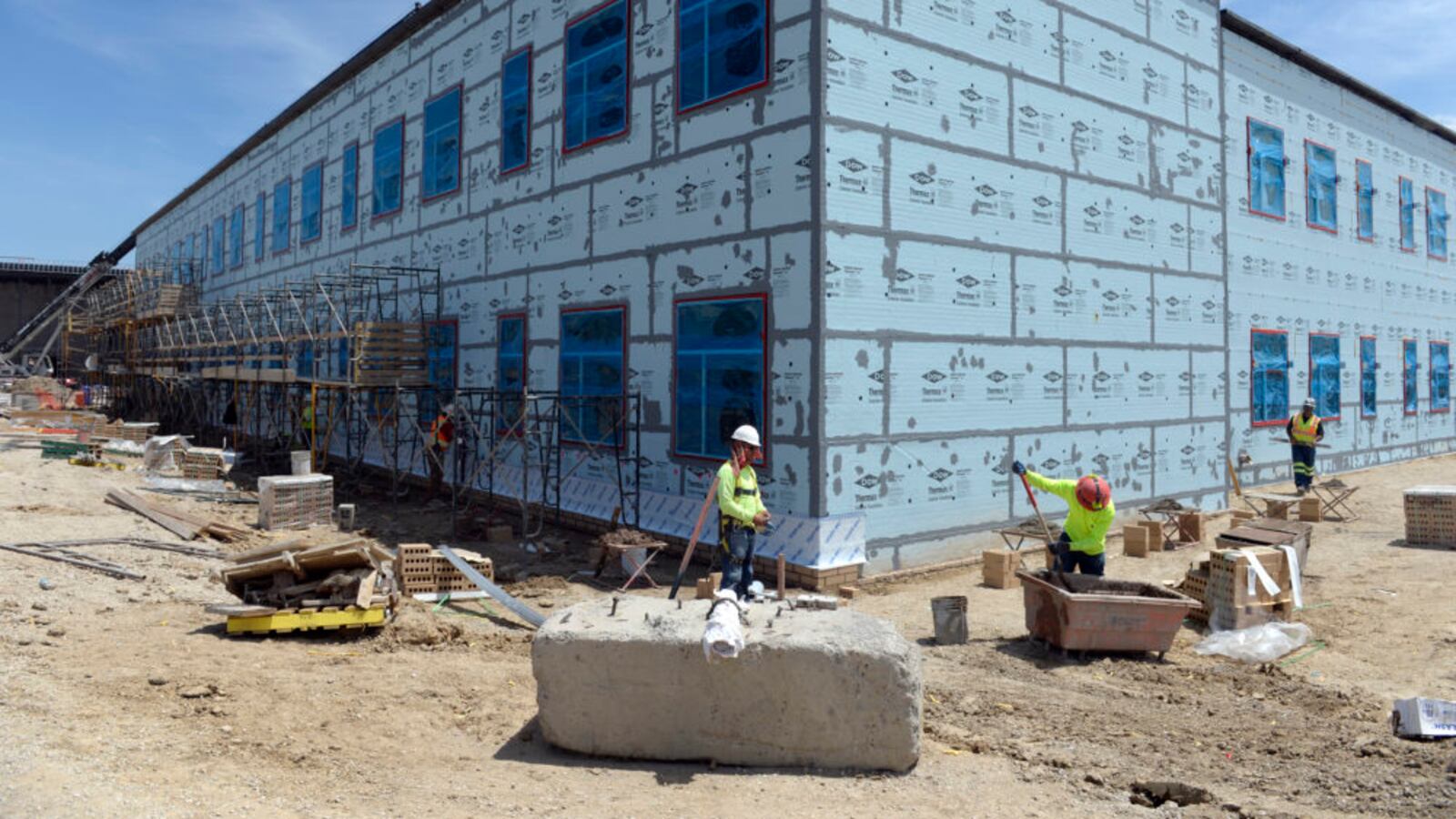More marijuana tax money will go toward school construction starting next year, but the funds won’t go as far as they could have.
That’s because some lawmakers are nervous about borrowing against pot money when the industry faces an uncertain regulatory future. They removed a provision in a bipartisan bill that would have allowed the state to issue more debt for school construction and repay that debt with pot taxes. Their fear is that the state could end up on the hook for that debt if marijuana money went away.
Members of the board that administers school building funds believe it’s likely they’ll use up their borrowing authority later this month for the 2018-19 fiscal year. Going forward, they’ll only be able to approve smaller projects whose cost can be covered with cash grants.
Kathy Gebhardt, vice chair of the Capital Construction Assistance Board, which administers the BEST program, called the fears about borrowing against marijuana money “overblown” and said it means Colorado will fall further behind on keeping its school buildings safe. She contrasted legislator’s caution on pot money to their willingness to borrow against the general fund, which goes up and down with the economy, for transportation projects.
The BEST program – Building Excellent Schools Today – provides grants to replace or repair aging school buildings. Most of its money comes from state school trust lands and marijuana excise taxes and goes out both as cash awards and as certificates of participation, a kind of debt that doesn’t require voter approval.
An independent board reviews applications from school districts with a priority on fixing health and safety problems. The board has never been able to move beyond this “tier one” priority level – though starting this year, the board is also supposed to treat technology upgrades at the same priority level. Many of the school districts that receive money don’t have the property tax base to fully fund their own building needs.
Later this month, the board will approve somewhere from $150 million to $200 million in grants, out of $900 million in requests. Districts have to come up with matching funds depending on their own financial resources.
Gebhardt described reading the grant requests while knowing most of them will not be funded “heartbreaking.” Most of the grants go not to new schools but to basic but pricey repairs like new roofs and HVAC systems.
The marijuana money going into the program has been capped at $40 million a year, even though for the last several years the state has taken in considerably more revenue from pot taxes. A bipartisan bill on its way to the governor’s desk would send 90 percent of recreational marijuana excise tax revenue each year to the BEST program or $40 million, whichever was larger. Of this money, 12.5 percent will be set aside for charter school facilities needs.
This accounts for almost all of the marijuana tax money going to schools – almost none goes to operational expenses – and the only state money going to school building needs.
Legislative analysts predict this change will provide $74 million in pot tax money to the school construction program in 2018-19 and $75 milion the following year.
The original version of the bill would have raised the limit on how much debt the BEST program can issue from $100 million to $110 million next year and $120 million the following year. Using certificates of participation allows the money to go further and fund larger projects like entire new schools, just like taking out a mortgage allows someone to buy a home that costs more than they could afford in cash.
However, some lawmakers and the governor’s office raised concerns about borrowing against marijuana revenue. U.S. Attorney General Jeff Sessions is hostile to legal marijuana, and the Trump administration has sent mixed signals, at one point withdrawing the Obama-era Department of Justice guidelines that have allowed pot to become a multibillion industry in Colorado, only to offer new assurances months later. At the same time, more states are liberalizing their marijuana laws, making it harder to go back.
And so the debt limit, like a credit card limit, will remain at $100 million. That means only $19 million of the new revenue can be used on certificates of participation. At that point, the program will have used up all its debt authority until it pays off some of its existing debt, a years long process.
Gebhardt said that means the state – and local districts – will miss out on the ability to build larger projects at today’s prices.
“Inflation is going up, construction costs are going up, so we can get a lot more bang for our buck trying to build something now instead of saving up and building later,” she said.

